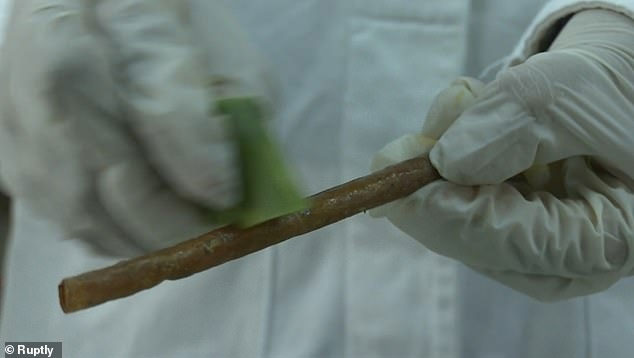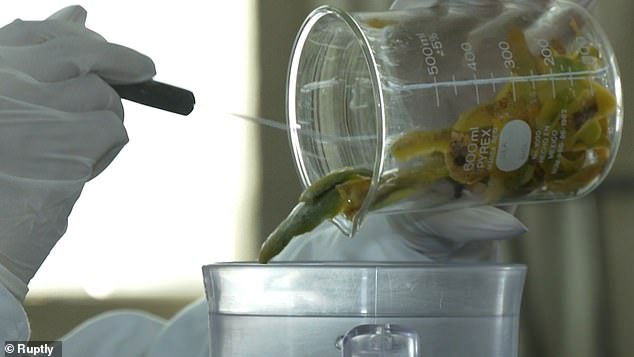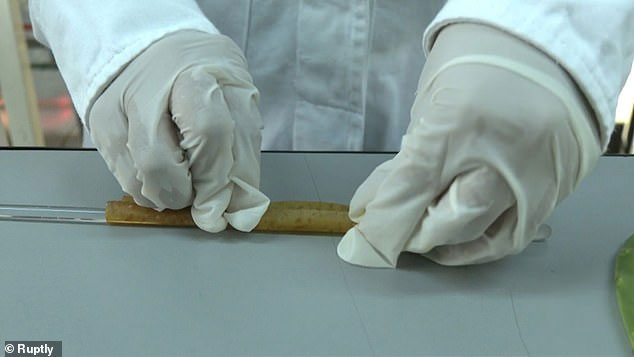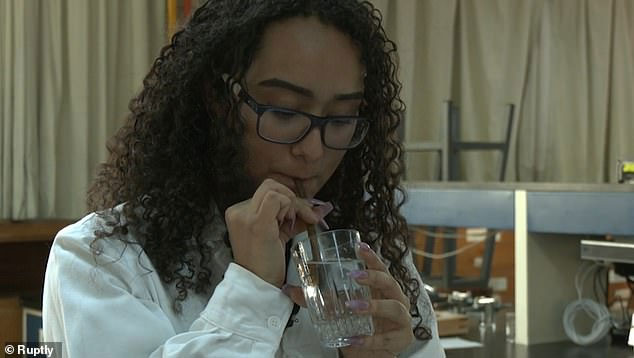Straws made from mango peelings are biodegradable
More than fifty million tons of mangoes are grown annually worldwide, but until now, their shells are often abandoned or used very rarely. Two college students in Mexico won the top spot at the university science fair with an innovative method of turning fruit peels into biodegradable straws.

Straws from the mango shells are made by students.
Itzel Paniagua and Alondra Montserrat Lopez say their motivation is their desire to protect the environment and prevent damage to the world's ecosystems caused by plastics.

Mango skin and some types of leaves are finely ground.
For more than a year of research and implementation at the School of Science and Humanities (CCH), they have found a way to blend, research, and deal with leaves.
The end result is a thin, dry sheet of powder that can be rolled into the tube wall and sealed, creating a straw.

The mixture after fine grinding, thinned, dried and rolled into a tubeand glued with natural binders.
Alondra Montserrat Lopez said: 'It's like a normal straw just a little thicker, colored between yellow and brown. It smells like mango but when used with drinks it has no flavor '.

The end result is an oral straw that can be used (pictured) and will decompose naturally in the environment.
'We had to do some investigations and tests; We had a lot of difficulties, but in the end we were successful, ' the UNAM students said. 'And now we want the school to support the project so it can continue to be commercialized.' UNAM, Autonomous University of Mexico, founded in 1910, is a public research university located in the capital, Mexico, Mexico. UNAM is a UNESCO world heritage site.

Two students Itzel Paniagua (L) and Alondra Montserrat Lopez (right).
Plastic waste and straws are a threat to the environment, with their ability to biodegrade in nature, ensuring they exist in nature for hundreds of years. Terrible images show animals struggling to cope with the human waste stream. Turtles and other sea creatures are eating plastic straws and bags after mistaking them for food, dolphins and sharks are dying after being caught in an old fishing net, and birds are making plastic nests .
Change is underway widely to find ways to minimize human impact on the natural world, including alternatives such as biodegradation and seeking to increase recycling efficiency.
- Eco-friendly straws replace plastic straws
- 7 reasons why you want to stop using a straw right away
- History of straws and available straws
- Should you eat ripe mango or green mango?
- Plastic straws replaced with pasta in Italy
- Can chocolate be made from mango fruit?
- The plastic layer in the mango shell is just a natural silk shell
- Plastic pipes will soon be extinct in the world?
- From powdered vegetables, female students create 'nylon' bags that can dissolve in water
- What is biodegradable bag?
- Biodegradable shoes
- Australia tested the world's first mango picking robot
- The best mango seed market in the world
- Interesting benefits of mango fruit
 Is the magnetic North Pole shift dangerous to humanity?
Is the magnetic North Pole shift dangerous to humanity? Washington legalizes the recycling of human bodies into fertilizer
Washington legalizes the recycling of human bodies into fertilizer Lightning stone - the mysterious guest
Lightning stone - the mysterious guest Stunned by the mysterious sunset, strange appearance
Stunned by the mysterious sunset, strange appearance Since 5,000 years ago, people have known to use straws to drink beer
Since 5,000 years ago, people have known to use straws to drink beer  Plastic straws replaced with pasta in Italy
Plastic straws replaced with pasta in Italy  History of straws and available straws
History of straws and available straws  7 reasons why you want to stop using the straw immediately
7 reasons why you want to stop using the straw immediately  Save the world with simple items costing only 5000 VND, do you believe?
Save the world with simple items costing only 5000 VND, do you believe?  Plastic pipes will soon be extinct in the world?
Plastic pipes will soon be extinct in the world? 